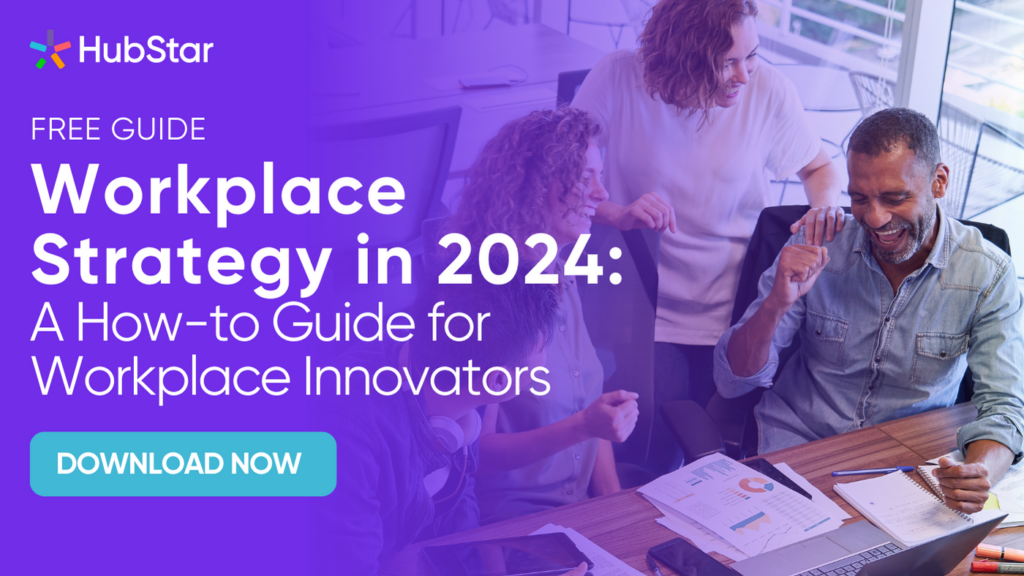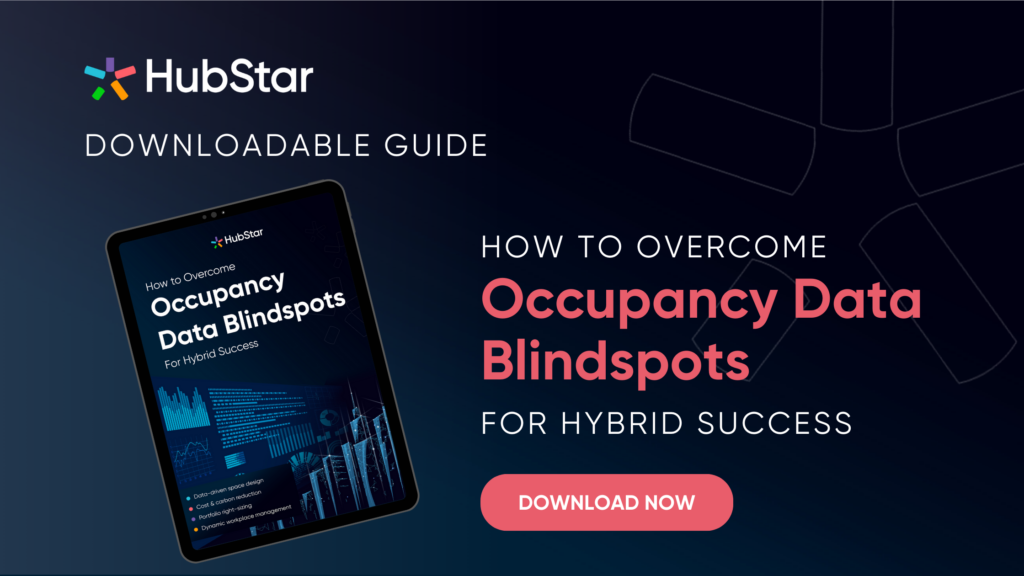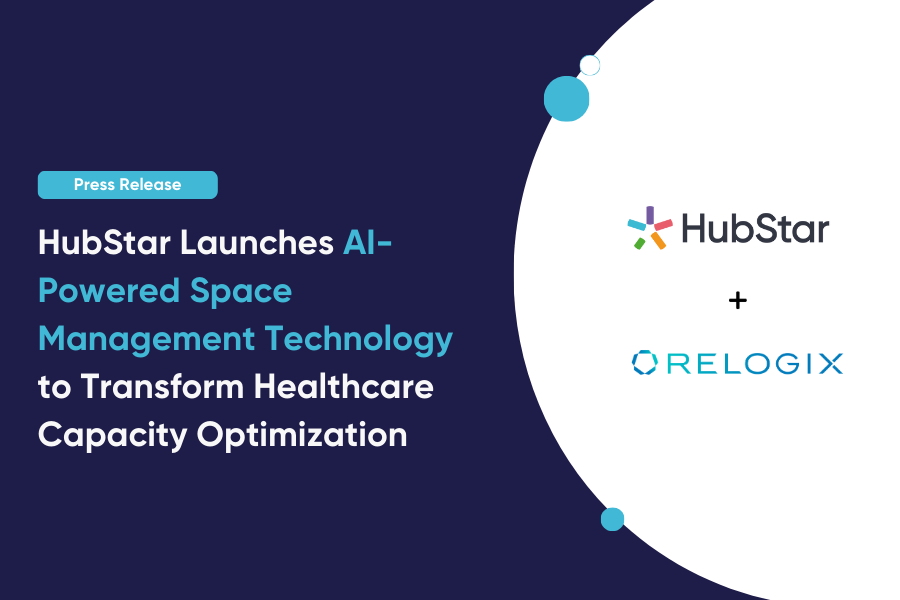How to Optimize Your Office Space Without Losing Your Mind

Contents
Figuring out what it takes to get hybrid employees back in the office feels a lot like a very expensive and never ending game of pin the tail on the donkey. How can you work out what sticks long-term without blowing all your budget and facing the wrath of the C-Suite?
Office design is often touted as a way to lure people back into the office, and while this can work well in the short term, it’s not a sustainable long-term strategy.
The hybrid workforce isn’t a captive audience anymore and hasn’t been for years, so having a “nice office” isn’t enough. All the nice plants, sleek furniture and great coffee are merely a bandaid fix if layout, design and functionality aren’t conducive to the work employees actually want to do when they come into the office.
Using the office as a tactic in a battle against remote work will inevitably end up as a war of attrition. And that’s because no one can deny the value of the convenience, time-savings and work-life balance remote work offers. Americans spent 60 million fewer hours commuting into work last year, and that’s a tough reality for the office to compete against.
But this doesn’t change the fact that some work is best done in-person, or that a physical workplace is essential for building a healthy company culture. Not to mention the boost to productivity and engagement that having a choice of work environment provides. And the facts don’t lie – hybrid workers are the most engaged.
So rather than use a “better office” as a carrot on the stick to get people back in the office, the right approach is to make the office an optimal place for whatever tasks and working styles hybrid employees have in mind when they come in that day.
For that, hybrid office spaces need to be optimized.
Optimizing office spaces: what does it actually mean?
Most of the time when the word “optimize” is used, it’s used as a fancier way to say “make it better”. But what does it actually mean?
Optimizing office space is the process of making sure it’s as useful, efficient and functional as possible.
Optimizing office space is particularly important for hybrid work because each space is being shared by multiple individuals who could have very different needs and working styles. So what could be a great space to work for one person coming in three days a week could be a downright terrible one for someone else coming in two days a week.

Which Types of Work Environments Do Employees Actually Want?
But there’s more to optimized office space than simply accommodating multiple needs and working styles. Successful hybrid office spaces also need to be:
- Cost-effective
- Sustainable
- Easily to alter for when things change (which they will)
How can you optimize your office space so it ticks off all these boxes without getting your entire budget and sanity dropkicked off the top of a 50 floor building in the process?
12 tips for optimizing your office space
- Designate areas of the office for individual and collaborative work. Excessively chatty neighbors and loud hallways conversations are common productivity destroyers. Specific spaces built for specific purposes solves this problem
- Provide individual storage lockers. Shared desks and individual clutter aren’t a good match, but carrying all your notebooks and cables back and forth every day doesn’t make for a happy commute. Individual lockers keep desks spic and span but doesn’t sacrifice convenience
- Use modular office furniture. Sliding dividers, adjustable height desks and anything that can be easily reconfigured personalize the workplace and helps each space serve multiple purposes
- Maximize natural lighting. Bright, open spaces lead to better ideas and reduced spend on lighting
- Invest in the right tech for hybrid meetings. Virtual whiteboards, right-sized conference room TV screens and hassle-free meeting room booking make meetings a breeze, wherever you’re signing in from
- Make sustainability a priority. Natural lighting and ventilation make a nicer work environment and slash carbon emissions. 3 million tons of office furniture gets sent to landfills every year, so upcycled furniture is a great choice
- Implement hassle-free desk and meeting room booking. Employees shouldn’t have to relinquish control over their work experience when they come into the office. An intuitive system that helps employees find and book the right resources for a productive day in the office provides that control and reassurance. It also makes sharing spaces with multiple hybrid work schedules much smoother
- Dust off the employee surveys. Feedback helps you understand what employees want from the office space, as well as what types of spaces should stay and which should go. Be sure you’re asking the right questions, however.
- Make data-driven decisions by measuring occupancy data. Take a look at occupancy data to find out how employees are using the space you already have. Optimize office spaces to replicate the layout and functionality of popular spaces and repurpose underused areas. This tip and the previous ones are how you figure out what kinds of work employees want to do in the office, so you can make optimization work around that
- Create a realistic hybrid work policy. Hybrid work policies stipulate how employees should be working and smooth out office occupancy patterns to make sure spaces aren’t being overloaded
- Measure success. This comes down to having good metrics that feed into overall business objectives. Occupancy data is a good place to start. When usage increases, it’s a surefire sign employees are seeing the value in the hybrid office. Don’t forget about employee feedback and satisfaction scores either
- Iterate. Optimizing anything is an inherently continuous process. Your success metrics show what’s working well and what’s not, and chances are that there’s always something that could be working better. Iteration will mean consistently updating office layouts and floor plans, tweaking hybrid work policies and schedules and investing in new tech
Workplace occupancy data can help you optimize your hybrid office spaces. But without the right types of data, you run the risk of making decision in the dark. Download this guide for a deep dive into how to overcome occupancy data blind spots and optimize your office.





